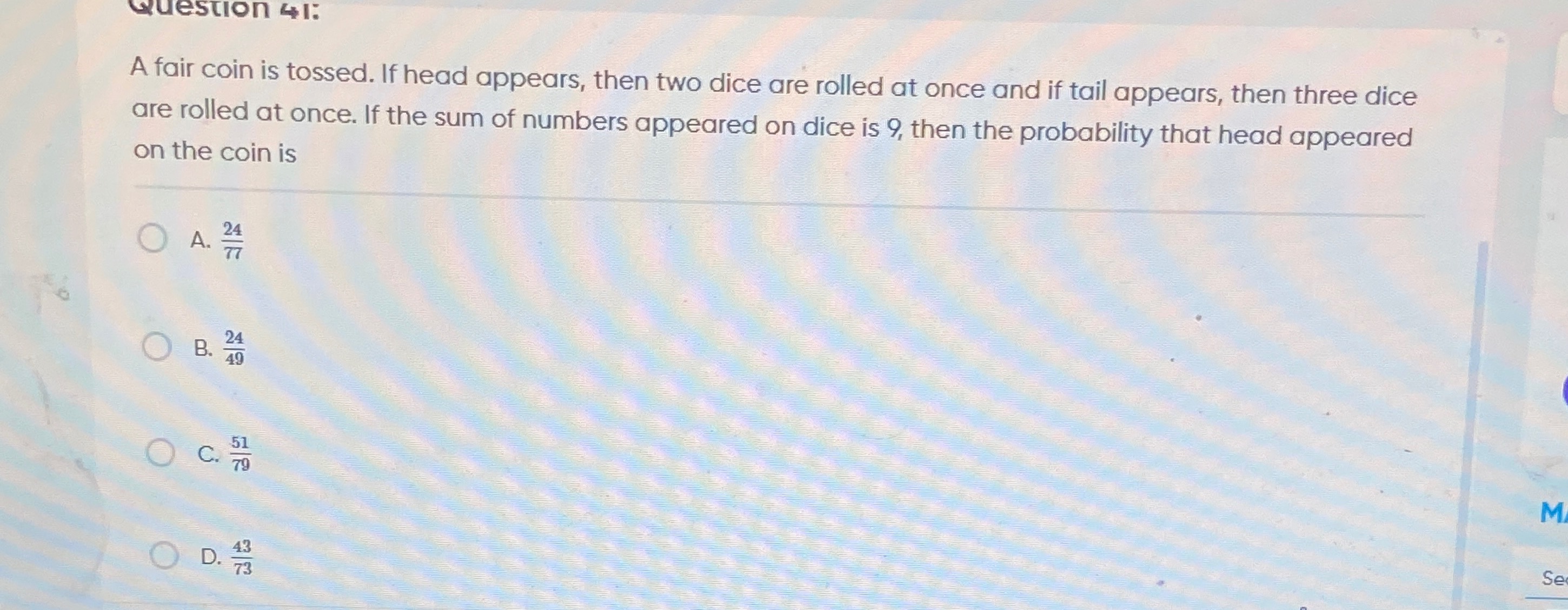Question
Question: A fair coin is tossed. If head appears, then two dice are rolled at once and if tail appears, then t...
A fair coin is tossed. If head appears, then two dice are rolled at once and if tail appears, then three dice are rolled at once. If the sum of numbers appeared on dice is 9, then the probability that head appeared on the coin is

7724
4924
7951
7343
4924
Solution
Let H be the event that a head appears on the coin toss, and T be the event that a tail appears. Let S be the event that the sum of the numbers on the dice is 9.
We are given that the coin is fair, so: P(H)=21 P(T)=21
We need to find the probability that a head appeared given the sum is 9, which is P(H∣S). Using Bayes' theorem: P(H∣S)=P(S)P(S∣H)P(H)
First, we calculate P(S∣H): If a head appears, two dice are rolled. The total number of outcomes is 6×6=36. The pairs of outcomes that sum to 9 are (3,6), (4,5), (5,4), and (6,3). There are 4 such outcomes. So, P(S∣H)=364=91.
Next, we calculate P(S∣T): If a tail appears, three dice are rolled. The total number of outcomes is 6×6×6=216. The combinations of three dice that sum to 9 are: \begin{itemize} \item (1, 2, 6): 3!=6 permutations \item (1, 3, 5): 3!=6 permutations \item (1, 4, 4): 2!3!=3 permutations \item (2, 2, 5): 2!3!=3 permutations \item (2, 3, 4): 3!=6 permutations \item (3, 3, 3): 1 permutation \end{itemize} The total number of favorable outcomes is 6+6+3+3+6+1=25. So, P(S∣T)=21625.
Now, we calculate the total probability of event S, P(S), using the law of total probability: P(S)=P(S∣H)P(H)+P(S∣T)P(T) P(S)=(91)(21)+(21625)(21) P(S)=181+43225 The common denominator is 432: P(S)=43224+43225=43249
Finally, we apply Bayes' theorem: P(H∣S)=P(S)P(S∣H)P(H) P(H∣S)=43249(91)(21)=43249181=181×49432=4924
